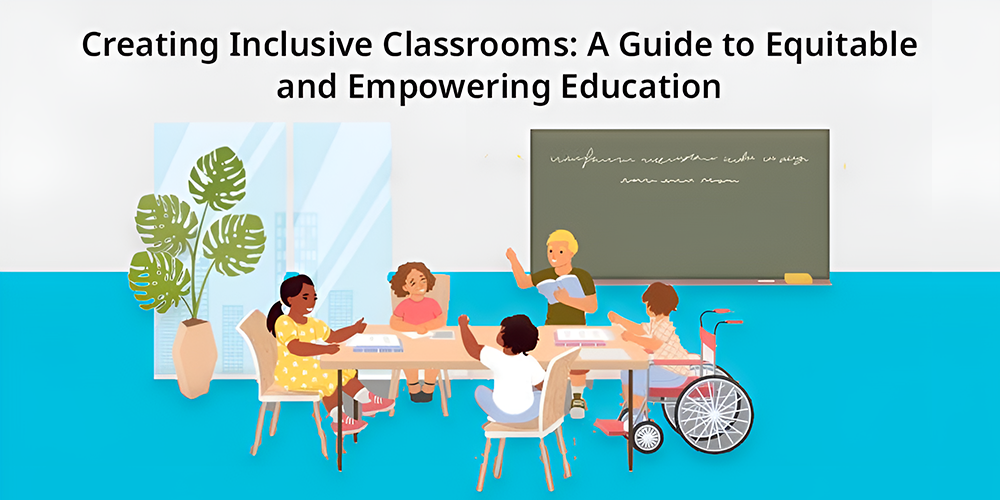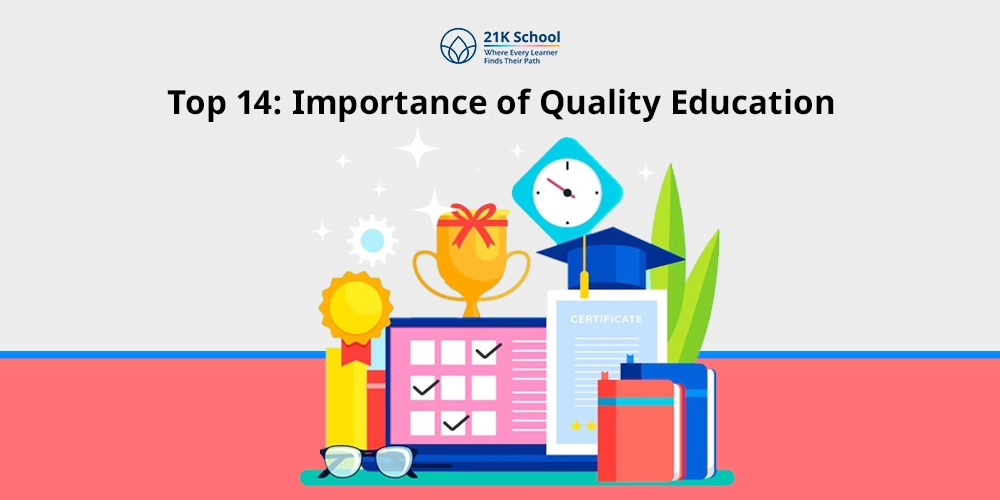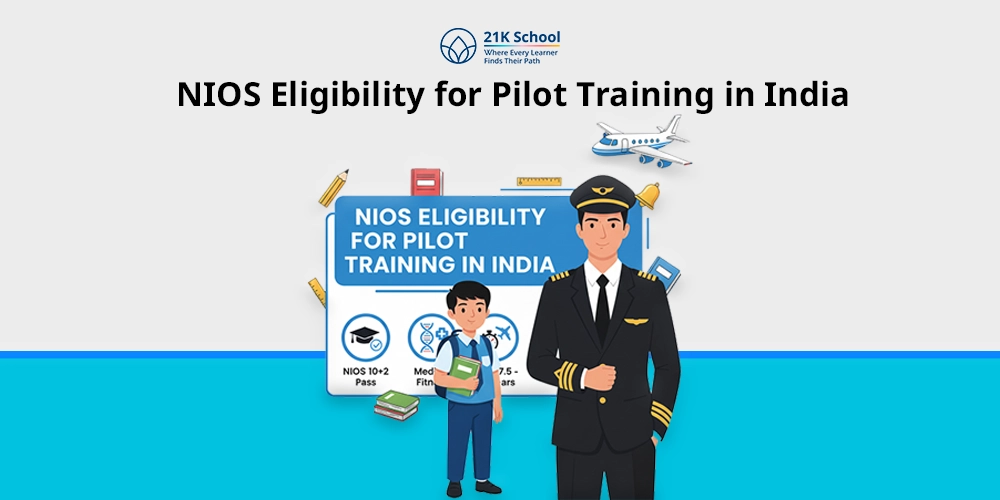
An inclusive classroom is one in which all students, regardless of background, abilities, or learning styles, are valued and supported.
Instead of isolating students with special needs or disabilities, inclusive education treats everyone equally and makes sure each student receives quality education.
Contents
- Why Inclusive Education Matters Today?
- Classroom Management in Inclusive Education
- Inclusive Classrooms and Special Education: What’s the Link?
- How Online Schools Are Making Inclusive Education More Accessible?
- Benefits of Inclusive Classrooms
- Key Strategies to Build an Inclusive Classroom Environment
- Challenges Faced in Creating Inclusive Classrooms, and How to Tackle Them
- Inclusive Classroom Examples
- Successful Models of Inclusive Classrooms Around the World
- 1. Salamanca Declaration (1994):
- 2. The United Nations Convention on the Rights of Persons with Disabilities (CRPD):
- 3. India: Emerging Models of Inclusive Education
- 4. Finland: Equitable Education System
- 5. Canada: Nationwide Inclusive Education Policies
- 6. New Zealand: Holistic & Culturally Responsive Learning
- 7. Italy: Full Inclusion Model in Public Schools
- 8. USA: IDEA and Mainstreaming Practices
- Final Words: The Future Is Inclusive
Why Inclusive Education Matters Today?
In today’s world, the idea of education has grown far beyond textbooks, tests, and rigid classrooms.
We’re beginning to understand that a truly effective learning environment includes every child, no matter their background, abilities, or learning style.
That’s where inclusive education comes in, and why it matters more than ever right now.
1. A Mirror of Society
Various languages, cultures, abilities, and perspectives are present in everyday life. Shouldn’t schools be similar?
Inclusive classrooms are a mini-model of the actual world, where students learn to embrace differences, communicate beyond barriers, and blossom as compassionate, open-minded people.
2. A Chance for Every Child
Not all kids learn the same, and that is okay. Some require more assistance. Others will excel at creative assignments, while a select few will require additional time with reading or math.
Inclusive education leaves room for all of it so that no child will be left behind because they cannot fit into a strict box.
3. Breaking the Cycle of Bias
When children are raised around only individuals who are “just like them,” it causes unconscious bias and misunderstanding.
But when they learn alongside peers from diverse backgrounds, they see the person first, not the label. That’s how you create a more tolerant, compassionate society.
4. It’s a Human Right
Fundamentally, education must never be a privilege. It’s a human right.
Inclusive education turns that right into a reality by providing each child, no matter what their background, the opportunity to learn, engage, and belong.
5. Preparation for a Stronger Tomorrow
Tomorrow’s leaders, colleagues, and neighbours are today’s students. The more they learn to accept diversity today, the better our workplaces, communities, and nations will be tomorrow.
Classroom Management in Inclusive Education
Inclusive classroom management entails establishing a safe and encouraging learning atmosphere in which students feel respected and valued regardless of ability.
This includes applying strategies that create ways for all students to learn in a manner that meets their learning needs, and meets teachers’ and students’ goals as a classroom community.
- Define Rules and Expectations: Create rules that are simple and consistent. Students should actively participate in defining the rules, as this builds ownership and accountability.
- Use Visual Schedules and Timers: Visual schedules can help all students, especially those with learning needs, to stay on top of their tasks.
- Cultivate a Positive and Respectful Classroom Environment: Encourage kindness, patience, and compassion. Use praise, encouragement, or reward systems to reinforce positive behaviour.
- Classroom Design and Flexible Seating: Provide students with the choice of where to sit and work as they have different sensory needs, levels of attention, and comfort.
- Differentiation-Instruction: Teach in different ways using multiple delivery forms (visual, auditory, kinesthetic) to enable students to learn based on their strengths and needs.
- Utilise Peer Support and Cooperative Learning: Working together and learning from one another increases the opportunities for students to build social connections and relationships.
- Consistent and Fair Behaviour Management: It is important to respond to behaviour consistently. Calmly redirect students when necessary, or apply logical consequences instead of punitive measures.
- Utilise Assistive Technology and Tools: Types of tools, such as speech-to-text, audiobooks, or screen readers, can provide opportunities for students with disabilities to engage with lessons fully.
- Maintain Regular Communication with Parents: Provide parents with regular updates concerning their child’s progress and behaviour. Parents can provide additional support beyond the classroom when they are up to date with their child’s learning.
- Evaluate and Adjust Strategies as Needed: Each class is different. Look for themes in terms of what is working, and be flexible about shifting your approach and strategies based on student feedback and outcomes.
Inclusive Classrooms and Special Education: What’s the Link?
Inclusive classrooms do not dismiss special education, but bring together the best of both worlds.
Special education programs provide targeted support for an individual child with a disability, while inclusive classrooms provide unique features so that students with disabilities do not isolate themselves from their learning and peers.
So then, the best models will utilise trained professionals to provide specialised support and collaborative experiences that allow students to learn from each other.
This creates a culture of belonging and inclusion for each child, and academic and social growth.
Finally, it reminds us to consider what true inclusion is: not only treating everyone the same, but giving everyone what they need to be successful.
Also Read, Inclusive Education Vs Special Education
How Online Schools Are Making Inclusive Education More Accessible?
Physical infrastructure is a major obstacle in inclusive education. However, online schools can bypass these restrictions through the use of technology in education to take the classroom into our homes.
At 21K School, students:
- Can learn at their own pace,
- Are a part of small and manageable class sizes,
- With physical, emotional or learning difficulties, feel safe and confident in familiar environments, and
- Teachers can focus on each learner’s needs.
Online education is bringing equity to education and providing educators with more accessible ways to engage with students.
Read on to learn how to promote inclusive education in schools ?
Benefits of Inclusive Classrooms
Inclusive classrooms provide a variety of benefits, which include a sense of belonging. The following are its advantages:
1. Academic and Social Development for Everyone
Inclusive environments improve academic performance for all students. Exposure to a variety of perspectives encourages critical thinking, innovation and problem-solving.
2. Fostering Empathy and Mutual Respect
Collaborating with peers from diverse backgrounds or with varying needs helps students develop empathy, respect, and kindness. This form of social growth endures throughout their lives.
3. Equal Learning Opportunities for All
Inclusion means that every student has an opportunity to learn. Regardless of the reasons for a child’s needs (disability, language barrier, etc.) or preferred learning style, every child is given an equal chance to flourish.
4. Improved Peer Relationships and Collaboration
Inclusive classrooms and collaborative learning go hand-in-hand. Students learn from one another, encourage each other, and develop beneficial social skills with other learners.
5. Boost in Student Confidence and Participation
When students feel welcomed by others, they have more confidence in themselves.
Read on to know more about, How to build confidence in children ?
Their willingness to take risks increases, and they become more likely to ask questions, volunteer and participate in learning experiences.
6. Preparing for a Diverse and Inclusive Tomorrow
Teaching kids how to function, interact and learn alongside each other is key to developing active and respectful participants in our global society.
Key Strategies to Build an Inclusive Classroom Environment
To create a space for all students to thrive, teachers may use strategies such as creating a safe and welcoming space, differentiating instruction, promoting communication tools for respectfulness, and valuing diversity, among others.
Given below are key strategies to build an inclusive environment in the classroom:
1. Differentiated Instruction for Various Learning Styles
Differentiated instruction is a way of teaching for varying types of learners. This approach helps to ensure that every child engages with the lessons.
2. Universal Design for Learning (UDL)
Universal Design for Learning (UDL) is a way of proactively ensuring that lessons can be accessed by everyone from the beginning.
This is about offering multiple means to present the content, engage students in the classroom, and assess their learning.
3. Collaboration and Co-Teaching
Co-teaching involves general educators working alongside special educators to collaboratively plan and teach lessons that both can differentiate to meet the varying and diverse learning needs of their students.
4. Inclusive Curriculum Development
An inclusive curriculum ensures that a diverse set of cultures, voices and histories are present in the class.
It provides opportunities for all learners to see parts of themselves reflected in what they are learning, and makes engagement easier while enhancing belonging.
5. Classroom Accommodations
Accommodations can be as simple as providing extra time for tests or seating a student near the board.
Support like this is meant to help students overcome barriers without modifying the overall goals of learning.
6. Regular Teacher Training on Inclusion
Teachers are more effective when they keep up with best practices. Thus, continual professional development is extremely important.
Challenges Faced in Creating Inclusive Classrooms, and How to Tackle Them
From the lack of proper resources to not enough awareness, here are the challenges of enforcing inclusion in classrooms, and how to solve them:
1. Tackling an Absence of Teacher Training and Resources
Not all teachers are confident about inclusive education and providing supportive methods for the learners.
Ongoing, regular training, along with support from the establishment, could assist in building the comfort level and pedagogical skills of all teachers.
2. Combating Resistance to Change and Bias
One of the main challenges of inclusive education is that there can be resistance to inclusion, from an educator or parent, which would be due to established old belief systems or misconceptions (not necessarily through malice).
Raising awareness through media campaigns, success stories, and a willingness to engage in a dialogue can assist in a shift of mindset.
3. Managing Large Class Sizes and Individual Needs
A large class with a lot of diverse needs can be unwieldy for teachers.
Some of the solutions are: creating smaller class sizes, having a teacher aide, in addition to using blended learning strategies where personalisation can happen.
4. Ensuring Accessibility and Infrastructure Support
Schools need to be equipped with ramps, accessible toilets and access to digital tools and technology.
For many of these challenges, the online school can eliminate most of these barriers and concerns for inclusivity, so these need to be supported and funded.
5. Securing Funds for Inclusive Programs
Inclusion comes at a cost – training, tools and people. Governments, NGOS, and private organisations must partner to make inclusion a priority in education.
6. Building Awareness Among Parents and Communities
Parents are integral in the discussion around inclusion. Schools can run workshops and support groups, as well as community gatherings to facilitate understanding and ownership.
Your next read: Tips for parents to help their child succeed in school.
Inclusive Classroom Examples
The examples below illustrate how minor adjustments in the classroom setting can significantly influence outcomes:
- A student with dyslexia utilises text-to-speech software to have the lesson read aloud.
- A hearing-impaired student uses captions and sign language interpreters to access the material.
- A mixed-ability student group project where each child works to their strength.
- An online school student provided a choice in format-text, video or interactive for their chapters.
- Teachers have used flexible assessment—oral, visual, written—to accurately assess student learning.
Successful Models of Inclusive Classrooms Around the World
The objective of an inclusive model, wherever it is implemented, is to create an environment where students with and without special needs feel a sense of belonging, engage as active listeners, and have the opportunity to participate among peers.
Here are some successful models from around the world:
1. Salamanca Declaration (1994):
The Salamanca Declaration recognises that all children should be included in mainstream education settings. The declaration was signed by 92 governments in the world.
2. The United Nations Convention on the Rights of Persons with Disabilities (CRPD):
This treaty expressed the rights of all children with disabilities to be included in the general education systems.
3. India: Emerging Models of Inclusive Education
Schools in India have begun providing flexible online education to meet the needs of students of all abilities and across regions.
4. Finland: Equitable Education System
Finland’s education system is well-known for its high quality and a focus on equality. It embraces inclusive education and the diversity of learning needs.
5. Canada: Nationwide Inclusive Education Policies
Canada also has strong inclusive policies within schools, ensuring student access to education and cultural responsiveness across provinces.
6. New Zealand: Holistic & Culturally Responsive Learning
New Zealand embraces wellbeing, identity, and inclusion. The indigenous cultures are respected, acknowledged, and woven into learning.
7. Italy: Full Inclusion Model in Public Schools
Many decades ago, Italy abolished segregated schools in favour of personalised learning plans that assist students with special needs in general education settings.
8. USA: IDEA and Mainstreaming Practices
The Individuals with Disabilities Education Act (IDEA) has mandated that students should be educated free and appropriate in the least restrictive environment.
Many schools in the USA have adopted or are experimenting with inclusive co-teaching models.
Final Words: The Future Is Inclusive
Inclusive classrooms are not only about ramps or extra time. They are about redefining our concept of education as a shared experience.
We can economically enhance inclusion in schools through our use of technology, online learning, flexible teaching and enhanced policy.
At 21K School, the future of learning is here, now. With a commitment to diversity, accessibility and innovation, we can continue to show that all children thrive when everyone can be included.



